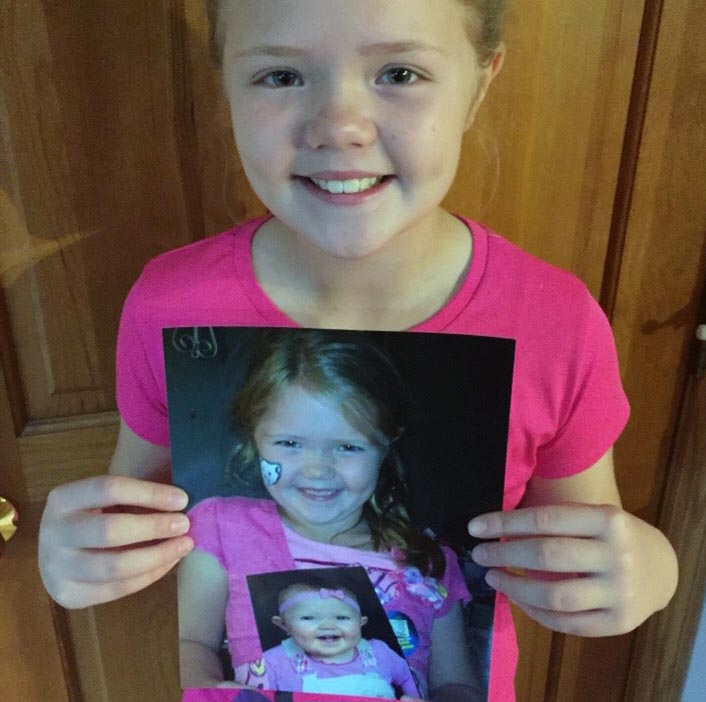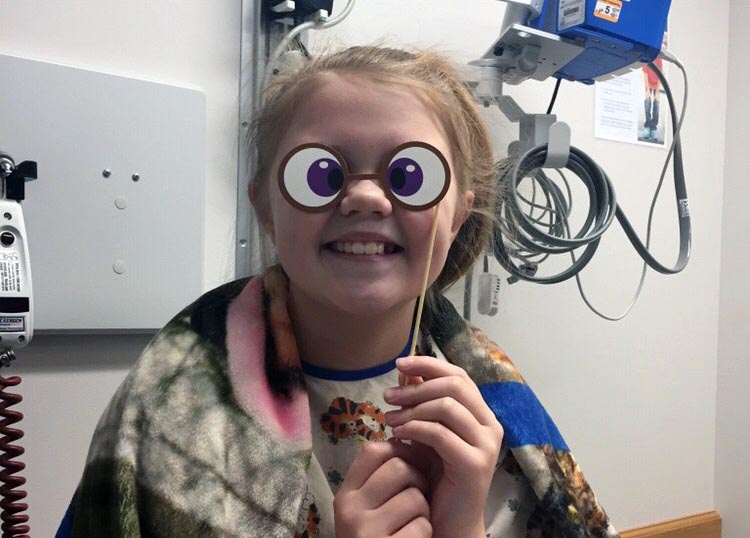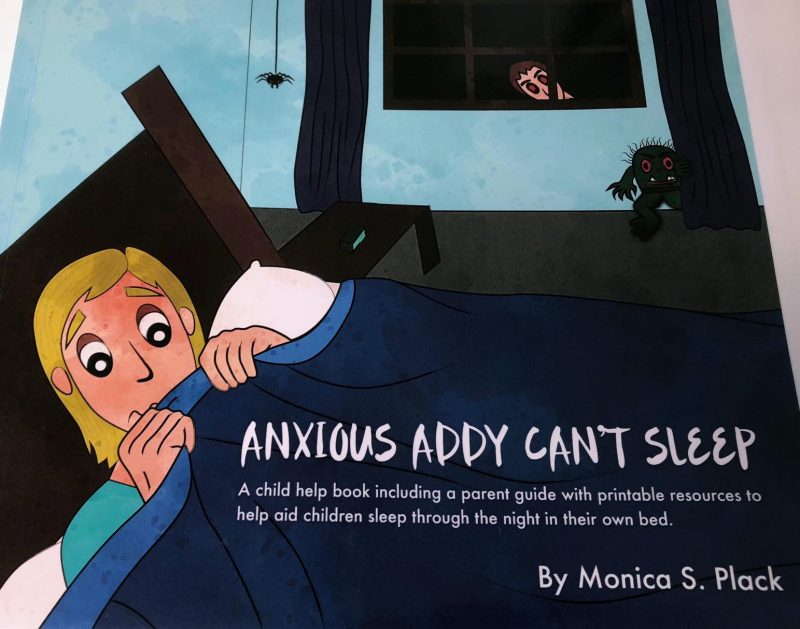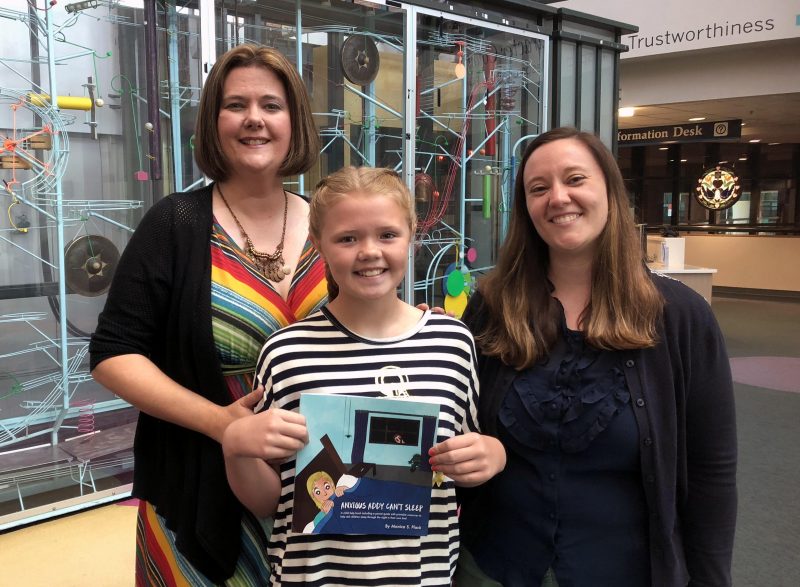
Bailey
Rewards. Bribery. Anger. Frustration. Lights on, lights off. Music. Stuffed animals. TV on, TV off. Fans. Melatonin. Talking, pleading, professional counseling.
Monica and Richard Plack had tried everything to get their youngest daughter, Bailey, to sleep through the night – in her own bed. It had been an ongoing battle; Bailey was now 10 years old, and everyone just needed a good night’s sleep.
Bailey was afraid of the dark and worried a lot. Her anxiety was not limited to nighttime. Diagnosed with a generalized anxiety disorder, she might become overly worried about something others would perceive as a minor concern and was prone to panic attacks.
“Only a mother or father of a child with anxiety can understand what it is like to not be able to console your child who is being unreasonable (through no fault of their own), due to anxiety taking over,” said Monica. “To watch your child in a full-blown panic attack is an awful thing.”

After completing a Sleep Medicine consultation at Akron Children’s, pediatric pulmonologist Dr. Greg Omlor referred Bailey to Dr. Jamie Travis, a pediatric psychologist who specializes in treating behavioral pediatric sleep disorders.
“She truly changed our lives,” said Monica, of Dr. Travis. “Bailey trusted her and, although some of the interventions she recommended were bits and pieces of things we had tried, we were not pulling it all together correctly. Jamie was the answer to our prayers.”
Like many toddlers, Bailey was afraid of the dark and didn’t like being alone so she made frequent middle-of-the-night trips to her parents’ room.
But, unlike most other children, she was unable to overcome her fears on her own and they persisted through her pre-school and early elementary school years.
“We began to think we wouldn’t get a peaceful night’s sleep until she went off to college,” Monica said, only half joking.

The Plack Family at Christmas
But Dr. Travis helped Bailey work through her fears.
“After working with her, I realized I liked my own bed – it was comfortable – and I liked being in my own space,” said Bailey. “Once I was sleeping through the night, I also just felt better in the morning and better through the day.”
Dr. Travis’s plan for Bailey was multi-faceted but focused on helping her overcome her anxiety, gradually changing her behaviors, establishing a bedtime routine, getting her to “buy into” the program, and having high expectations for consistency in follow-through for Bailey and her parents.
Highlights of the plan included:
- An official “begin” date so the family would clearly be able to track progress over the days and weeks ahead.
- Teaching Bailey “relaxation techniques,” such as deep breathing exercises and visualization (of, say, a favorite place), to deal with anxious moments.
- Replacing bedtime television watching and reading on electronic devices with quiet time activities like reading books, playing with toys, or listening to soft music. Bailey also found a personalized lullaby relaxing.
- Using “flashlight scavenger hunts” to help Bailey overcome her fear of the dark. Bailey would enter her dark room with only a flashlight to look for objects hidden by her parents. Over time, the objects got smaller and harder to find but the increasing amount of time gradually “desensitized” her to being alone in the dark.
- Using a sleeping bag to transition Bailey from parents’ room to her own room. At the beginning of the plan, she slept in the sleeping bag near her parents’ bed and each night it was moved closer to her room. At some point, she realized her own bed was more comfortable than sleeping in a sleeping bag in a hallway.
- Keeping up her “Rewards” and “Responsibilities” charts. Each night, Bailey would give herself checks for not using electronics and following other rules of her new bedtime routine. This would coincide with earning points that could be redeemed for items like a bowling or ice cream shop outing with family, family board game night or a new toy or book. Bailey created the charts herself so she was more invested in her own success.
- A commitment to consistency was perhaps the most important aspect of the plan.
Bailey, now 11 and a student at Jackson Sauder Elementary School, is sleeping through the night. She enjoys sleeping over at friends’ houses and is gaining so much confidence she is interested in performing on a stage.

All of that high quality sleep only helps fuel her busy days – full of school and extra-curricular activities like basketball and lacrosse.
“She truly is a great success story,” said her mother. “She is a totally different kid.”
Dr. Travis said like any other successful endeavor her work with the Plack family came down to a team effort.
“The Plack family’s difficulties with helping Bailey to learn to sleep independently and overcome nighttime fears were similar to sleep difficulties I see with many of the families I work with,” said Dr. Travis. “It’s easy to get into patterns that work well in the short term but are less helpful long term for getting enough good quality sleep and/or overcoming anxiety. Bailey and her parents were motivated to improve Bailey’s sleep and decreased her anxiety. They worked hard to implement the different strategies we discussed consistently and were open regarding Bailey’s successes and any barriers that were present to help them reach their treatment goals.”

“Anxious Addy Can’t Sleep” is written by Monica S. Plack and authored with Bailey E. Plack
Anxious Addy Can’t Sleep
Even though Bailey has overcome her sleep difficulties, a bright-eyed, blond child named “Addy” still struggles with thoughts of spiders, aliens and monsters at night.
Addy is a fictional character whose journey to getting a good night’s sleep is chronicled in a picture book written by Bailey and Monica.
“Anxious Addy Can’t Sleep” is a paperback that captures the emotions of a child and her parents confronting anxiety, nighttime fears and many failed attempts to overcome these bedtime struggles – before meeting Dr. Dreams (a.k.a Akron Children’s pediatric psychologist Dr. Jamie Travis).
It’s the Plack family’s way of sharing what they learned from their own mistakes and Dr. Travis’ successful interventions.

“I learned that my husband and I did many things incorrectly when it came to a bedtime routine and rules with both of our children,” said Monica. “Looking back, I would have fought through my sleepiness and been more firm with my children in their bedtime routines. Like many parents, after baseball games, volleyball, band, dance, grocery shopping, dinner prep and clean-up, I didn’t have much energy left for arguing with my overly dramatic daughter about sleeping in her own bed.”
The back of the book includes a parent resource guide, including illustrations of Bailey’s rewards and responsibilities charts.
The book is $14.95 and available through Amazon.










